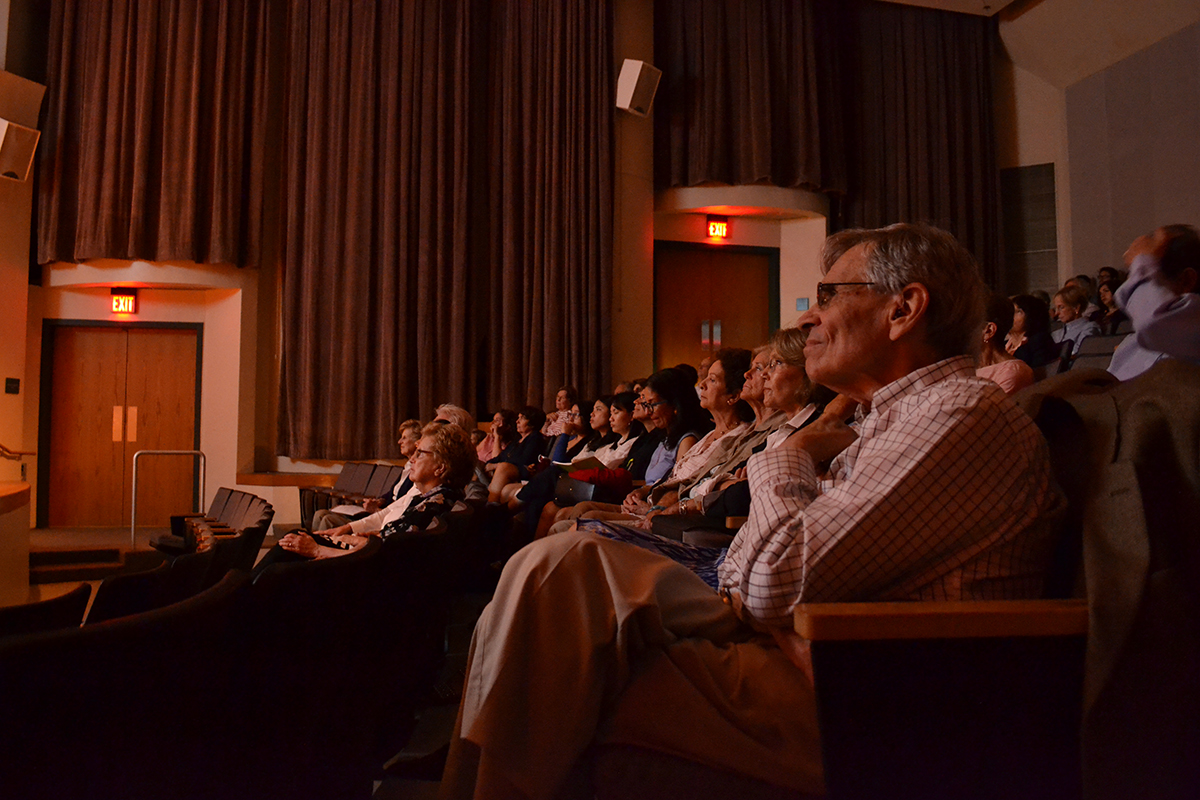
The audience of Professor Emeritus Cooper visited the Weeks Center one last time for the final lecture in his Musicology Series on Oct. 13. This last lecture was titled “Similarities, Cross-Currents, & Analogies Among the Arts.”
With a focus on literature, dance, music and art, Cooper showed the audience how each of these art forms can be understood and evaluated through one phenomenon all living things experience: perception.
“In the arts, can there be inclusion of anything or everything nearly because something may be labeled art?” Cooper asked the audience.
One of the first examples Cooper displayed was a heap of trash. Scrap metals, paper products, kitchen garbage and two taxidermy seagulls were stacked in a mound. The audience chuckled in agreement when Cooper declared the heap a pile of junk.
He then displayed another image with a strong light shining onto the heap and instantly, the pile transformed into more than just junk: the shadows cast the image of a couple onto the wall behind it. This piece, by Tim Noble and Sue Webster, allowed Cooper to introduce his audience to the idea of a new sense of perception.
Cooper gave another example, this time in music. He quoted singer Peter Gabriel when he said, “A good song is one that makes you think, makes you feel and if you’re lucky, makes you move as well.”
“Think. Feel. Move,” Cooper said. “Gospel does that.” The room was then filled with the lively melodies and emotional voice of a gospel singer in a video he displayed. This illustration showed how music could induce ecstatic feelings when it involves one’s mental, emotional and physical abilities.
The emotion behind gospel is easily discernible, as the lyrics and tunes are balanced. The listeners clearly understood the way the music made them feel, unlike when Cooper played a piece by Luigi Nono, an Italian avant-garde classical composer, which was disorganized and cacophonic.
Luigi Nono employed harsh, fragmented vocals and unpredictability in his compositions with obscured messages, purposefully making his work uncomfortable for listeners.
“Nono’s combinations of sound, I hesitate to use the word ‘harmony,’” Cooper said. “… Rhythms unfelt by us … and [the music] serves some aesthetic function perhaps to the composer’s mind, but not in mine,” Cooper said.
Though approached with humor, Cooper’s point was still meaningful. At the end of his life, Nono was inspired by a motto that served as a guide to his compositions: “Caminante, no hay caminos, hay que caminar,” which translates to, “Traveler, there is no way to travel, only traveling.” Nono doesn’t ask his listeners to simply hear his music; rather, he offers a journey of understanding for his listeners.
Cooper’s audience learned that perception is individual, and the awareness of this concept can lead to a greater appreciation of the arts. Perhaps perception is an art form within itself.
Frost School of Music Dean Shelton G. Berg offered a closing statement to the event.
“I spent 40 years in higher education on the teaching side of it … and I’d have to say that no doubt there is only one Frank Cooper,” Berg said about Cooper’s lectures. “What we witness every time we’re given this opportunity is something unmatched.”
Berg announced that Cooper’s lecture series will be perpetuated in the Frost School of Music as the school nears its goal of raising $50,000 in donations. The legacy of Professor Emeritus Frank Cooper’s stimulating talks will live on.






